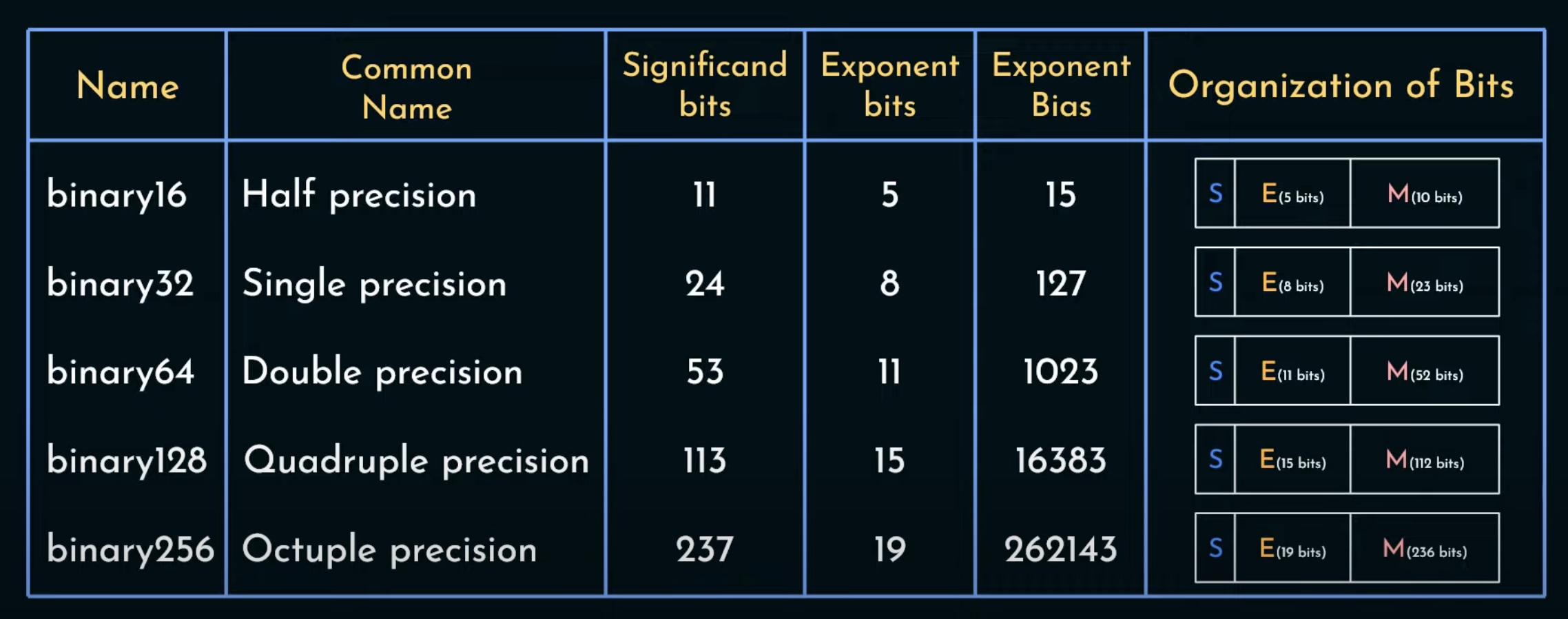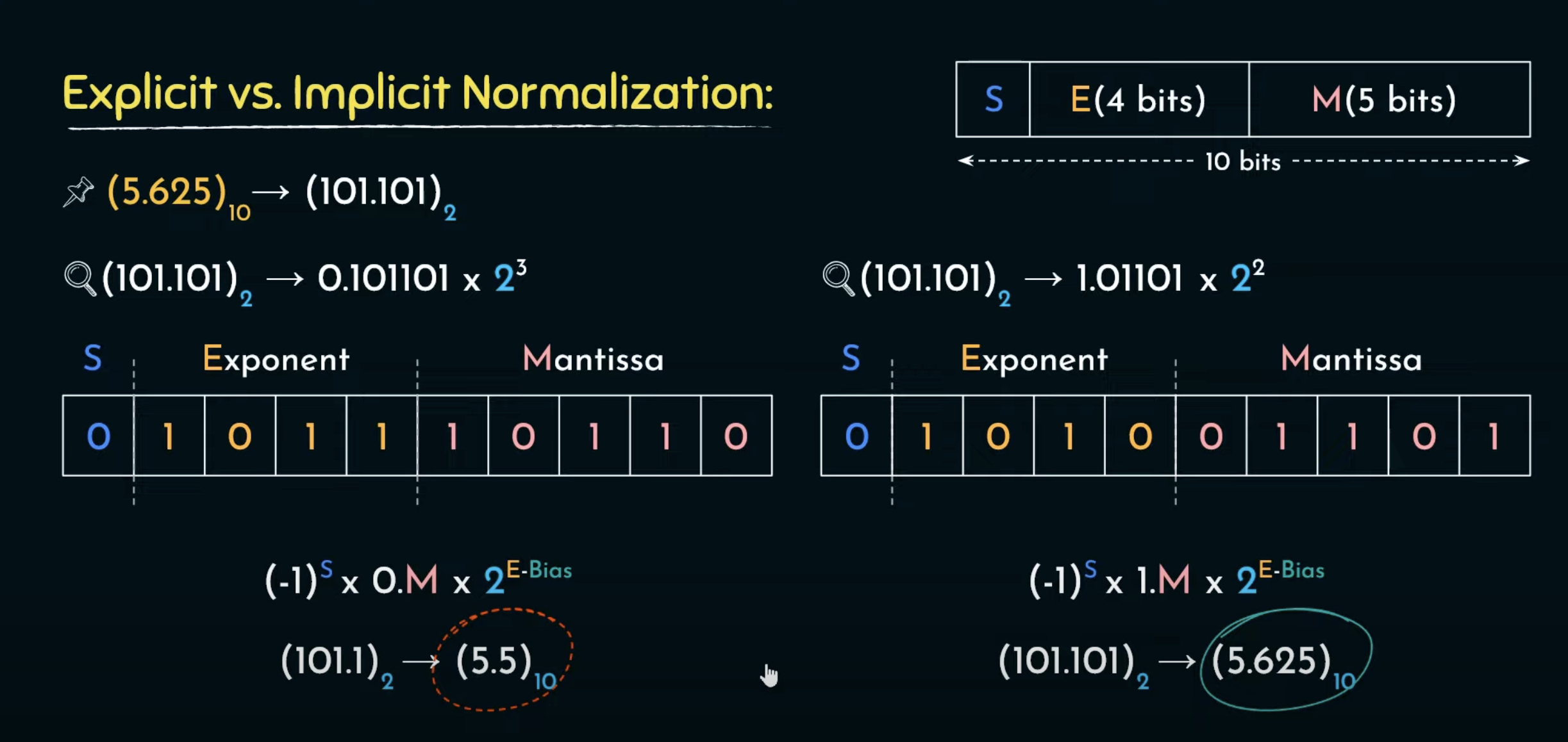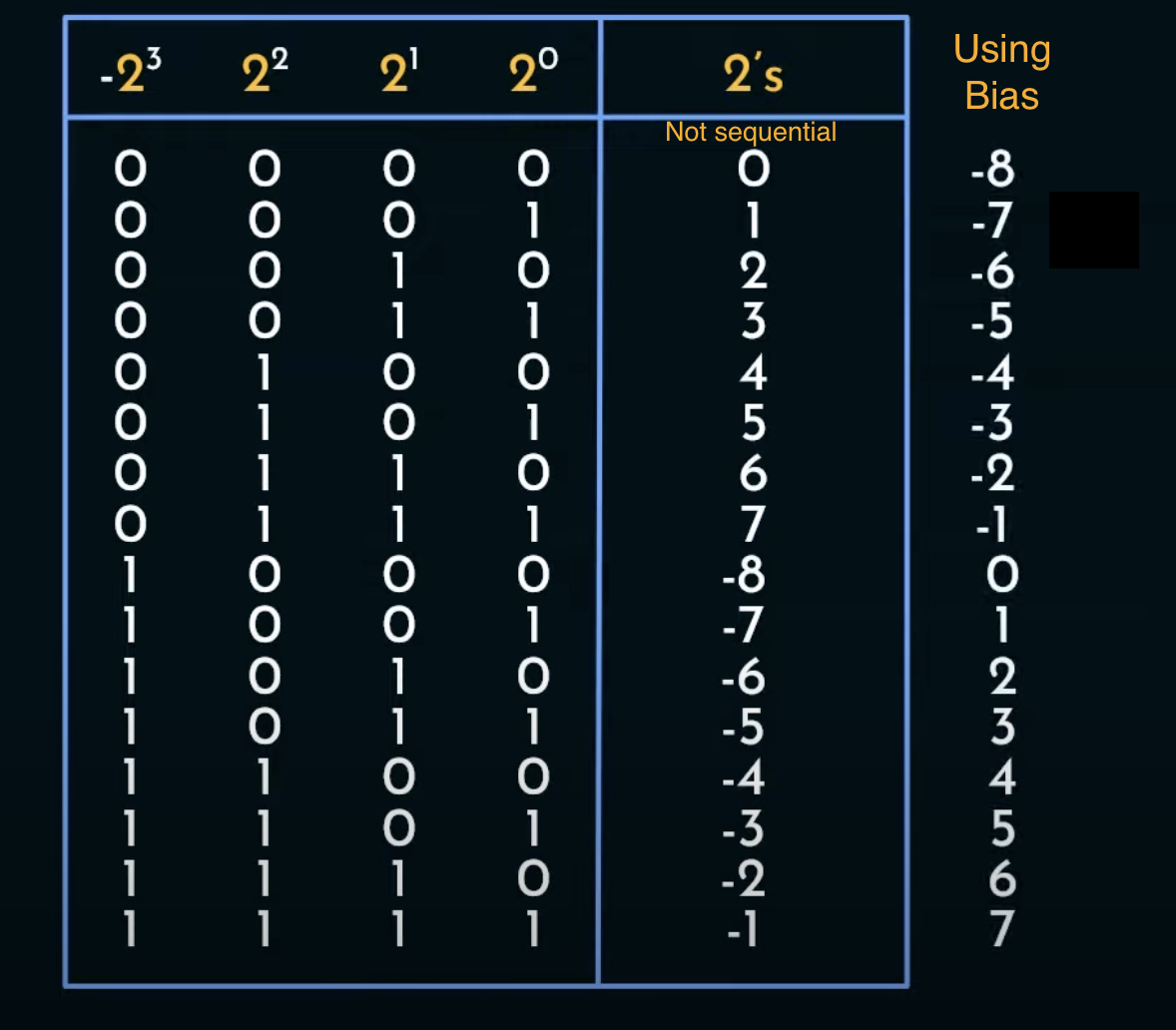Floating Point Numbers
In general, the value of a floating point represented number can be calculated as
The sign (S) is stored in MSB.
The real exponent can be computed from exponent bits (E) by subtracting Exponent Bias (refer Biasing)
The mantissa (M) (also known as significand or fraction)
It uses Implicit Normalisation, thus actual value is 1.M
First bit in mantissa has weight 1/2, then 1/4, 1/8 and so on.
Mantissa has a (real) value between 1.0 and 2.

Normalisation
Need
A number in binary can be represented in thousands of ways in a mantissa-exponent format
e.g. 101.110 can be represented as , , and so on
We need a fixed representation for a number
Explicit Normalisation
Move the radix point to the left hand side of most significant "1" in the bit sequence
e.g. 101.110 →
Implicit Normalisation
Move the radix point to the right hand side of most significant "1" in the bit sequence
e.g. 101.110 →
Since we know that the bit on the LHS of radix point is always going to be 1, we can ignore the bit while storing the mantissa. This increases the precision of mantissa

Biasing
Why not 2’s complement to store signed exponents?
- In 2’s complement, the transition from +ve numbers to -ve numbers is not sequential. Also, the -ve numbers decrease as we increase the magnitude.
- Comparators are not efficient at comparing signed and unsigned integers.

Other Formats
BF16 (brain floating point)
https://en.wikipedia.org/wiki/Bfloat16_floating-point_format
This is different than binary16 or FP16, commonly known as half-precision
In FP16, there are 5 bit exponent and 10 bit mantissa,
BF16 has 8 bit exponent and 7 bit mantissa
Why 8 bits?

Comparing with FP32 or binary32, it is trucated in the mantissa, but keeps the same exponents.
This makes it easy to convert to and from binary32 format
This removes the precision from mantissa at the gain of widening the range of possible numbers (compared to binary16)
Application of BF16
1. accelerating machine learning
2. near-sensor computing
Quantization
quantization on hugging face
Quantization is a technique to reduce the computational and memory costs of running inference by representing the weights and activations with low-precision data types like 8-bit integer (int8) instead of the usual 32-bit floating point (float32).
where = floating point number with any precision (float32, float64)
S = scale, and is a positive number with ==same precision as ==
Z = the zero-point, it is the int8 value corresponding to the value 0 in the float32 or float64 realm.
The scale (S) will vary per application basis, and needs to be decided such that will be able to represent all the necessary floating point numbers in our application without losing a lot on precision.
INT16
A quantized data format to store floating point numbers
Contains 1 sign bit and a 15 bit mantissa
INT8
A quantized data format to store floating point numbers
Contains 1 sign bit and a 7 bit mantissa
Application of quantization
- storing models of neural network
Additional Notes
What Every Computer Scientist Should Know About Floating-Point Arithmetic
https://dl.acm.org/doi/pdf/10.1145/103162.103163
William Kahan
”How Futile are Mindless Assessments of Roundoff in Floating-Point Computation ?“
https://people.eecs.berkeley.edu/~wkahan/Mindless.pdf
https://arxiv.org/pdf/2305.14314.pdf
QLORA introduces multiple innovations designed to reduce memory use without sacrificing performance:
(1) 4-bit NormalFloat (4NF)
(2) Double Quantization, a method that quantizes the quantization constants,
https://github.com/TimDettmers/bitsandbytes
The bitsandbytes is a lightweight wrapper around CUDA custom functions, in particular 8-bit optimizers, matrix multiplication (LLM.int8()), and quantization functions
herbie simplifies floating point calculations to increase accuracy